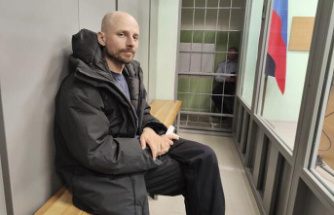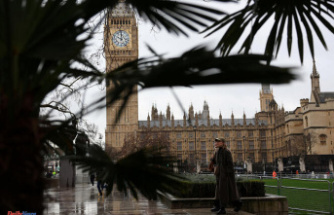The case of "Leben Tod Ekstase" (life and death ecstasy) was part of the long list of somewhat off-beat thrillers from the Frankfurt branch with Janneke and Brix. Visually a cosmic trip into the subconscious, the subject was an extremely controversial one: psycholysis, the somewhat different kind of psychotherapy.
"You do realize that you have a pretty bad record as a psychiatrist? All your patients were on the 'good way'. Now they're all dead," is how Brix (Wolfram Koch) soberly comments on the outcome of that psycholysis session got spectacularly deadly out of control. The starting point of the investigations in the "crime scene", the 16th of the Janneke/Brix axis, has an extremely real background.
A few years ago, a case in Handeloh, Lower Saxony, caused a stir. At a naturopath seminar on the topic "The seven sources - a journey through our energy system", a psychotherapist had distributed substances to the participants, including the hallucinogen 2C-E and DragonFly, a so-called psychoactive substance.
The experiment went haywire. As a result, 27 participants had severe delusions, suffered from cramps, tachycardia and shortness of breath. Over 160 rescue workers were deployed. The 53-year-old therapist was sentenced to a suspended sentence of one year and three months by the Stade Regional Court in 2017 for possession and sale of drugs. A case in Berlin in 2009 was even worse. At that time, a doctor had also administered drugs to his patients and got the dose wrong in such a way that two of the participants died and another fell into a coma.
The idea of psycholysis, i.e. the use of psychedelic substances such as mescaline, LSD or psilocybin, has its origins in shamanism. Finally, at the beginning of the 20th century, American doctors experimented with mescaline sulfate, and at the end of the 1940s, the Sandoz company brought the drug Delysid onto the market, which was ultimately LSD. The goal of the medication according to the package insert: "mental relaxation in analytical psychotherapy, especially in the case of anxiety and obsessive-compulsive neuroses".
Experts came together again and again, met at symposiums and congresses, later MDMA and LSD were used with special permits. The German Narcotics Act divides the so-called psychotropic substances into three groups: "marketable and prescription-capable", "marketable but not prescription-capable" and "not marketable", which also includes LSD, mescaline and psilocybin. Psycholysis is not approved as a form of therapy in this country.
There was talk of an "academic cult" in 2017. Sabine Bundschu, a musician from Munich, left the psycholysis scene and gave insights into the practices. In interviews, she talked about vows of silence, backroom excesses and delusions, and had suffered a stroke and cerebral hemorrhage in the process. The screenwriter Ariela Bogenberger, winner of two Grimme awards, also broke her silence, telling of her time in the so-called "cherry blossom community", a commune founded by psychiatrist Samuel Widmer, which held drug parties and sex orgies.
For a "crime scene" so again a lot of wood on background. "Leben Tod Ekstasy" delved less scientifically into the major psycholysis theme, the authors Michael Comtesse and Nikias Chryssos, who also directed, worked with relish on telegenic motifs - wild dances, feverish visions, a therapist between wit and Madness, passionate ladies and an ex-soldier with a lust for murder. It could not be overlooked that the villa was particularly suitable as an atmospheric location. One reason may lie in the history of the old walls. The Villa Meister once housed a rehabilitation clinic for addicts. Unbelievable? But that's how it's written...












